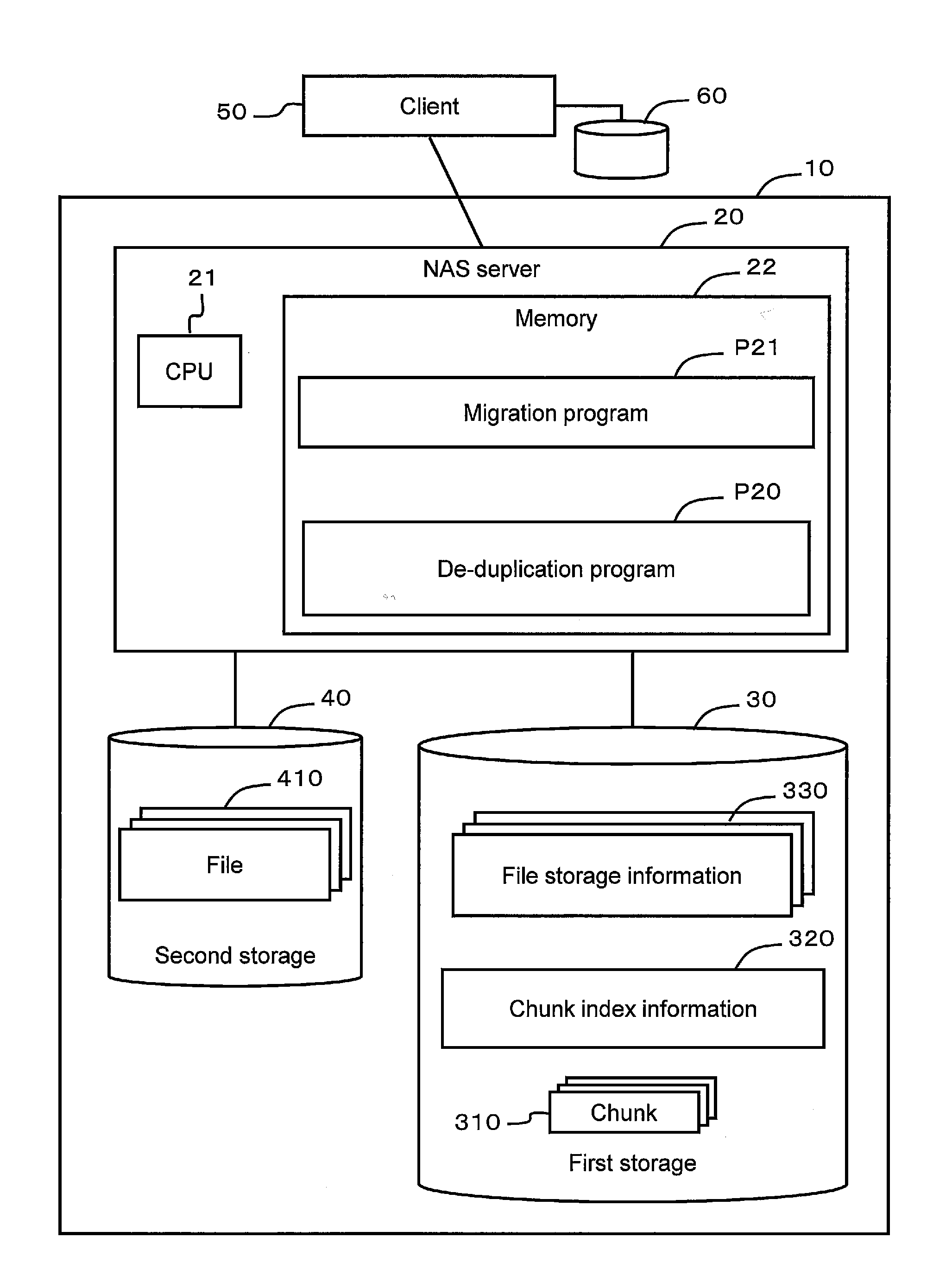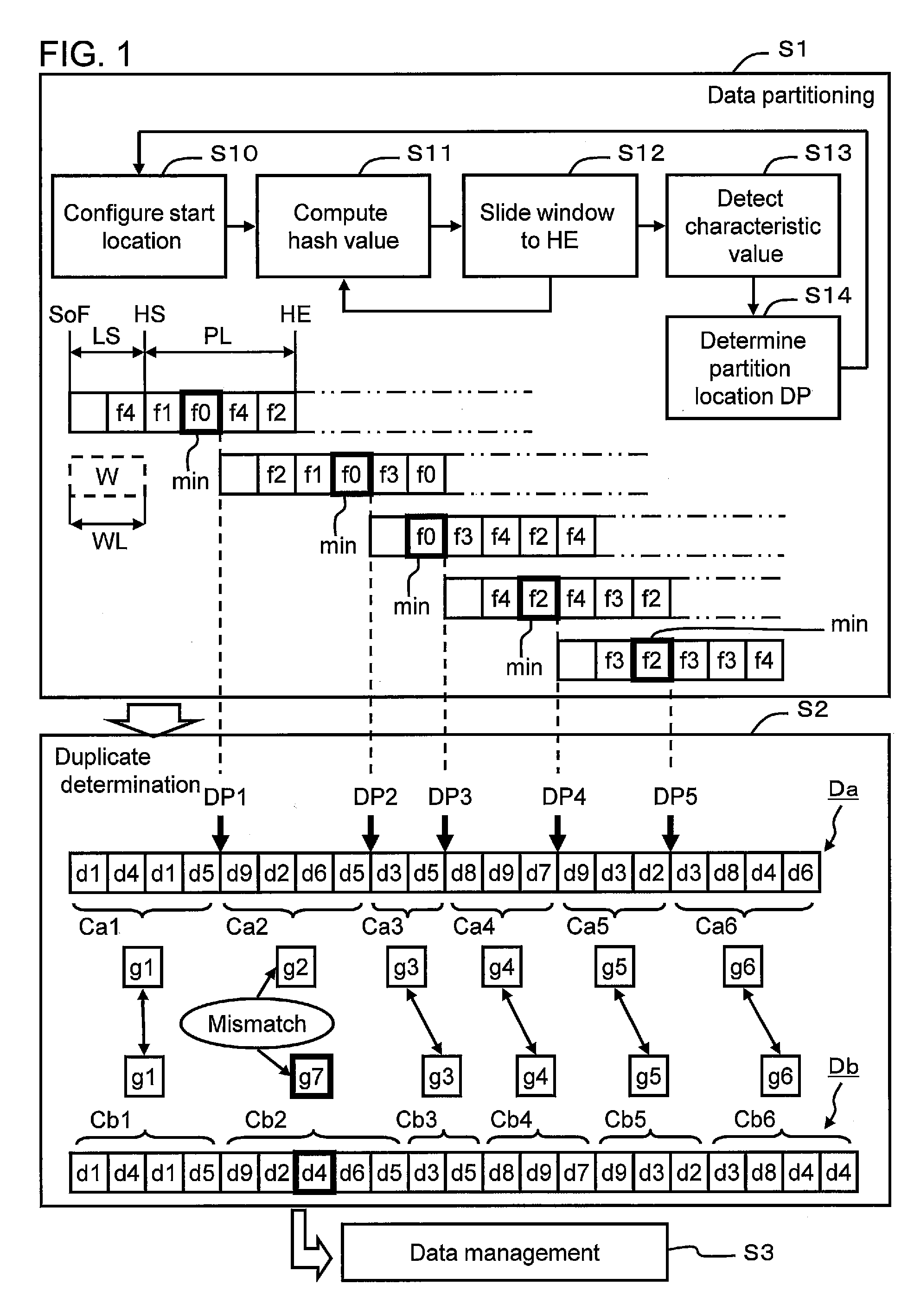Data management method and data management system
a data management system and data management technology, applied in the field of data management methods and data management systems, can solve the problems of wasteful consumption of storage resources by the generation of large numbers of duplicate files, and achieve the effect of data duplication
- Summary
- Abstract
- Description
- Claims
- Application Information
AI Technical Summary
Benefits of technology
Problems solved by technology
Method used
Image
Examples
first example
[0051]A first example will be explained by referring to FIGS. 2 through 9. FIG. 2 shows the overall configuration of a file data management system 10 as an example of a data management system. The file data management system 10, for example, can comprise a NAS (Network Attached Storage) server 20, a first storage apparatus 30, and a second storage apparatus 40.
[0052]The NAS server 20, for example, comprises a microprocessor 21, a memory 22, and a communication interface (not shown in the drawing). A de-duplication program P20, and a migration program P21 are stored in the memory 22.
[0053]The de-duplication program P20 is a computer program for detecting and eliminating duplicate file data and for partitioning and managing the file data as chunks of data. This program will be explained in detail further below.
[0054]The migration program P21 is a computer program transferring file data stored in the second storage apparatus 40 to the de-duplication program P21.
[0055]The first storage ...
second example
[0094]A second example will be explained by referring to FIG. 10. Each of the following examples, to include this example, is a variation of the first example. Therefore, the differences with the first example will mainly be explained below.
[0095]FIG. 10 is a flowchart showing a file partitioning process (S300A). This flowchart comprises all of S301 through S308 shown in FIG. 8. In addition, new processes (S310, S311) are added to this flowchart after the process (S303) for computing a first hash value from the data within the window.
[0096]The program P20, upon computing a first hash value (S303), determines whether or not this first hash value matches a preconfigured limiting value (S310).
[0097]The limiting value is a value denoting the theoretical limit of the characteristic value. In a case where the characteristic value is the minimum value of the hash values, this limiting value is “0000”. In a case where the characteristic value is the maximum value of the hash values, this li...
third example
[0103]A third example will be explained by referring to FIGS. 11 and 12. In this example, received target file data is processed serially.
[0104]FIG. 11 shows the overall configuration of a file data management system 10A of this example. The first difference with the configuration shown in FIG. 2 is that the second storage apparatus 40 for storing the file data received from the client computer 50 does not exist. The second difference is that the migration program P21 does not exist.
[0105]FIG. 12 is a flowchart showing the overall operation of the third example. The management system 10A, upon receiving the target file data from the client computer 50 (S100A), immediately executes the file partitioning process (S300) and the de-duplication process (S400).
[0106]That is, in this example, the file data received from the client computer 50 is processed substantially at the same time that it is received. In this example, the file data may be temporarily stored in either a buffer memory o...
PUM
 Login to View More
Login to View More Abstract
Description
Claims
Application Information
 Login to View More
Login to View More - R&D
- Intellectual Property
- Life Sciences
- Materials
- Tech Scout
- Unparalleled Data Quality
- Higher Quality Content
- 60% Fewer Hallucinations
Browse by: Latest US Patents, China's latest patents, Technical Efficacy Thesaurus, Application Domain, Technology Topic, Popular Technical Reports.
© 2025 PatSnap. All rights reserved.Legal|Privacy policy|Modern Slavery Act Transparency Statement|Sitemap|About US| Contact US: help@patsnap.com



